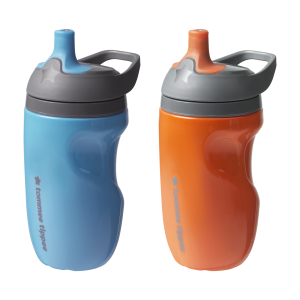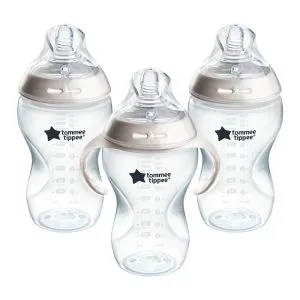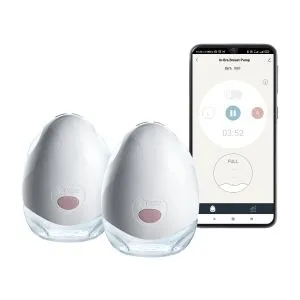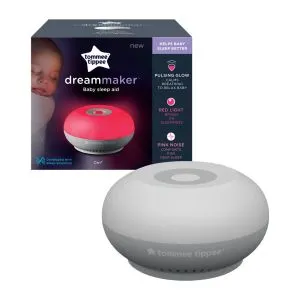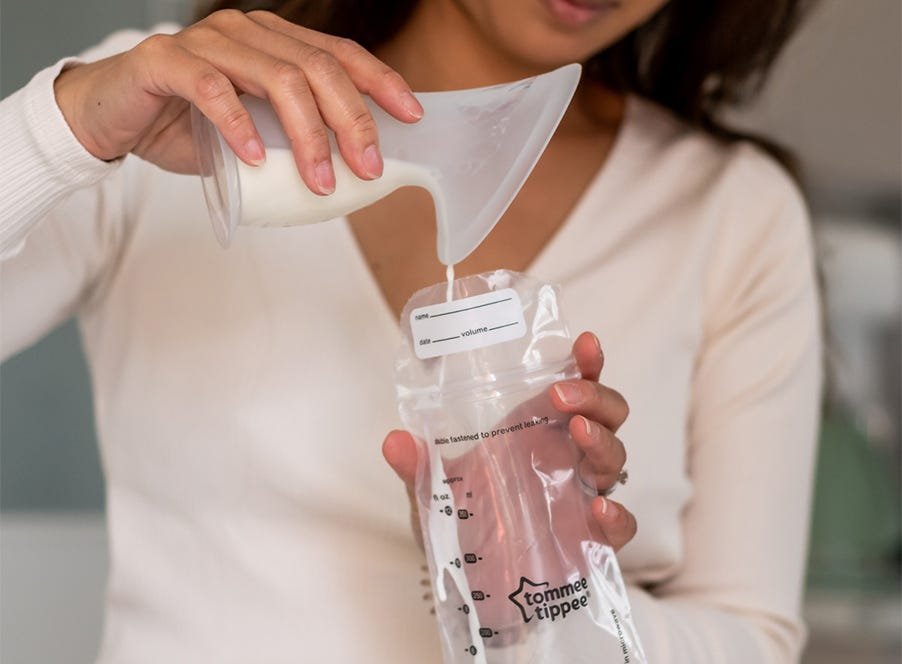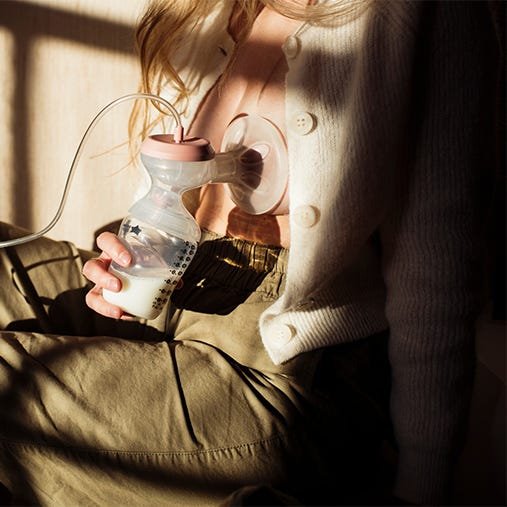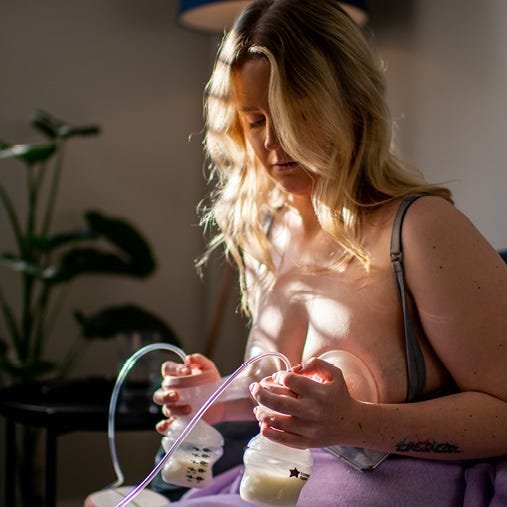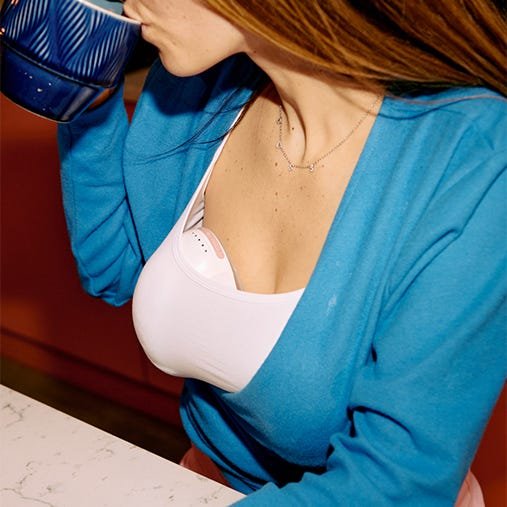Breast milk is important for both moms and their babies, and it's understandable that you're wondering how to store it safely. After all, it takes time and effort to express by hand or using a breast pump.
Expressed breast milk can generally be stored at room temperature for up to six hours, or four hours or less when it's been thawed from frozen. Safely storing it in the refrigerator or freezer can extend its shelf life and can have benefits if you're away from baby or want others to support with feeds.
Read on to learn all about how to store breast milk, how long expressed breast milk lasts, and to find out the answers to some common breast milk storage questions.
How to store breast milk
Before you begin storing your expressed breast milk, wash your hands thoroughly and make sure that the container you're going to use is sterilized and appropriate for the job.
It's also a good idea to make sure you've got what you'll need to label the container and check that you have enough space in your refrigerator or freezer to safely store it before you get started.
How to store breast milk in bags
Using breast milk storage bags is simple! All you need to do once you're finished pumping is transfer the expressed milk to the breast milk bag, then seal and label it, before storing it in the refrigerator or freezer.
Avoid bags that are not designed for freezing - they might burst or tear. Our storage bags are perfect for the job because they're already sterilized and ready for use right away!
Can you store breast milk in bottles?
Yes, you can store breast milk in clean bottles that have a screw cap, or hard plastic cups that have tight caps. Don't use glass bottles if you're storing your milk in the freezer because these may crack at very low temperatures.
Avoid using baby bottles with recycle number seven, as this number indicates that the plastic the bottle is made of may contain potentially harmful BPA. All Tommee Tippee baby bottles are baby-safe and BPA-free.
How to label breast milk bottles and bags
You should always label your chosen container, pouch, or bag with the date and time the milk was expressed, so you can use the oldest batch first.
If you can, use waterproof labels and a permanent marker pen that won't wipe off. It can help to add a 'use by' date too!
If your baby is going to have the milk when they're with a babysitter or at kindergarten, clearly add their name and ask your care provider if they have any other requirements for how it should be labeled or stored.
If you're going to freeze the milk, it can also help to write on the amount because breast milk can expand once frozen, and it can be tricky to see just how much you've got.
How long does breast milk last?
Breast milk can either be frozen or refrigerated depending on when you're planning to use it.
The best storage option for you will depend on a few factors, such as your plans for the day (whether you'll be out and about), and how much breast milk you've already stored for later.
How long can breast milk stay in the fridge?
It's best to put your expressed breast milk in the fridge as soon as possible once it's been expressed. To protect it from temperature changes as the door opens and closes, don't store it in the refrigerator door. Instead, store it as close to the back of the fridge as possible.
Breast milk can be stored in the refrigerator between 32°F and 50°F. Storing it in the refrigerator may be preferable over freezing, as freezing alters some of the milk's biologically active components.
You can store freshly expressed breast milk in the refrigerator:
- at 41-50°F for three days
- at 32-39.2°F for six days
If you're not sure of the temperature setting of your refrigerator, use the breast milk within three days to be safe.
How long can you keep breast milk in the freezer?
Breast milk can be stored in the freezer at 0°F or lower for up to six months. So, if you're not planning on using your expressed milk right away and you want to store it for longer than five days, pop it in the freezer as soon as you can after expressing to preserve the quality and nutrients.
When freezing breast milk, you should avoid using glass containers (because they can shatter or break when stored at low temperatures) and leave a 2.5cm gap at the top of your chosen container for expansion.
It's easiest to freeze breast milk in individual feed quantities of 2 to 4 oz. - at least until you know how much your baby has per feed - then it'll be ready to be defrosted when needed. You can also store smaller quantities of around 1 oz. for days when your baby is feeling extra hungry!
It's always helpful to store your newly pumped milk at the back and clearly label it with the date it was expressed. That way, when you're reaching for some frozen milk to give your baby, you'll always start with the oldest milk first.
You can store thawed frozen breast milk that's not been warmed:
- at room temperature (below 77°F) for four hours or less
- at the back of the refrigerator for up to 12 hours
Never re-freeze previously frozen breast milk and throw away any unused breast milk after thawing.
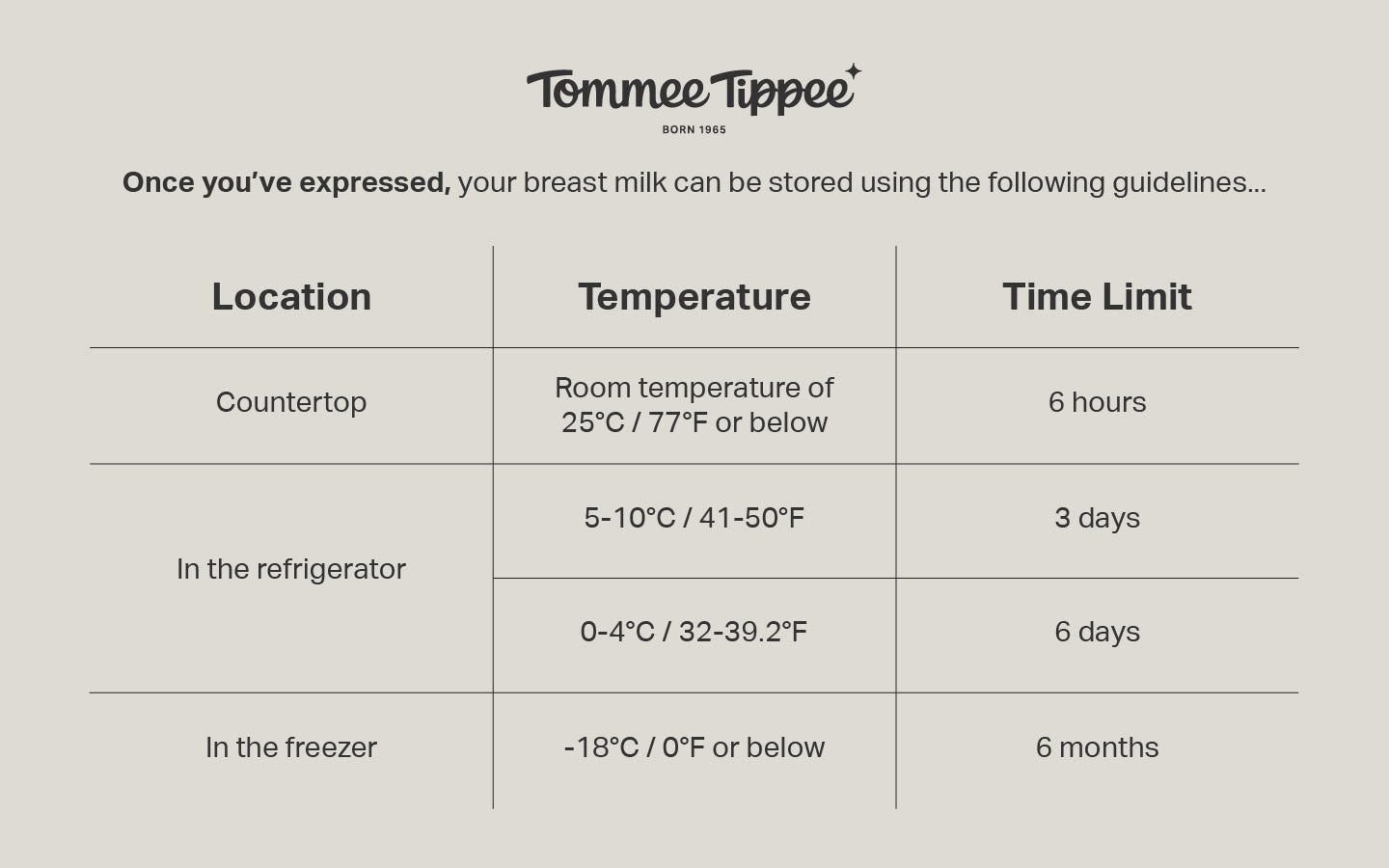
Please note, these guidelines explain how long you can store breast milk for a full-term baby with no additional health concerns.
If your baby is premature or has been ill, it's best to discuss this with your health professional to check that the same storage times apply.
Monitoring breast milk stored in the refrigerator or freezer
Just like any other foodstuff, breast milk will expire over time. The amount of time breast milk lasts depends on whether it's stored in the refrigerator or freezer, and at what temperature. You can buy special refrigerator and freezer thermometers to help you monitor this.
The longer you store your expressed milk, the more you should consider...
- Cleanliness and hygiene while expressing, storing, and handling it.
- Storing it at appropriate temperatures (use refrigerator and freezer thermometers).
- Checking for bad tastes and smells, which will tell if your breast milk has gone off. You should always pour away any milk that smells sour. Don't give it to your baby.
Safely transporting breast milk
If you're taking colostrum or expressed breast milk into the hospital, follow their advised storage and transport times.
If you want to take some expressed breast milk with you when you go out, make sure it's in a securely sealed container to avoid spills, and that it stays cold until you're ready to feed.
You can store your expressed breast with ice packs in an insulated cooler for up to 24 hours when you're traveling. Once at your destination, you should store it in the fridge or freezer, or use it to feed your baby straight away. If no ice packs are available when transporting expressed breast milk, make sure it's used within four hours.
